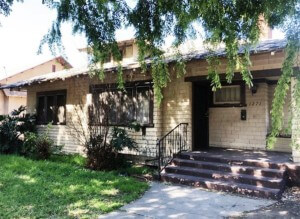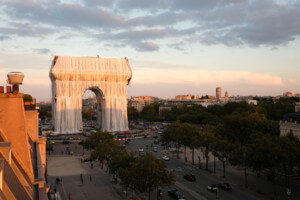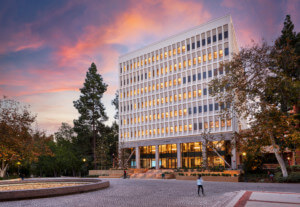The Julius Shulman Institute (JSI) at Woodbury University is currently exhibiting There is Only One Paul R. Williams: A Portrait by Janna Ireland at the school’s WUHO Gallery outpost in Hollywood, a show that re-calibrates and reorients Paul Revere Williams’s built legacy through architectural portrait photography.

The exhibition features the work of photographer Janna Ireland, who created a series of black and white photographs that highlight minute elements of buildings designed by the Los Angeles architect.
Over the course of getting to know Williams’s work, Ireland, a self-described neophyte to architecture, created over 200 photographs, ultimately gravitating toward, as she explained via email, “the small details because, taken together, they allowed me to make sense of the larger picture. It was a meditative process.”
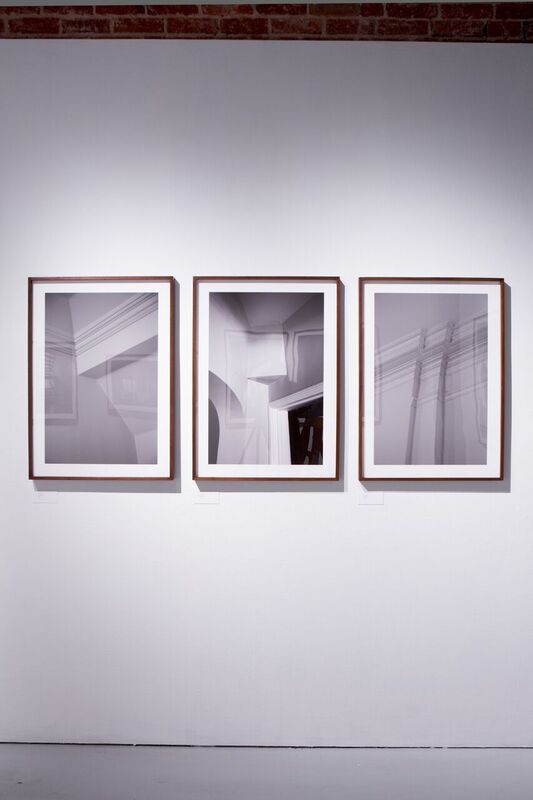
According to curators Andrea Dietz and Audrey Landreth, the monochromatic works on display aim to reconsider the oeuvre of the “prolific yet under-appreciated” Williams, a boundary-smashing African American architect who designed roughly 3,000 works across the Los Angeles area and was awarded the American Institute of Architects’ Gold Medal in 2017, the institute’s highest honor.
“The images that made the final cut did so for the elegant lines and simple geometries that identified the work as Williams’s,” Dietz explained via email. “The goal was to demonstrate both the consistency and range of Williams’s hand—and the unique clarity of Janna’s eye.”
The finely-considered nature of Ireland’s meditations on Williams’s work brings out subtle and meticulous qualities in the buildings themselves, revealing the romantic and deeply personal moments peppered throughout the homes and structures Williams designed over his 60-year-long career. Working together with the curators, Ireland is able to use the physical space of the gallery to set up conceptual oppositions between idiosyncratic bits of Williams’s work, harnessing the 500-square-foot space to depict a complex and heretofore uncharted portrait of an overlooked genius. Utilizing groups of images to reveal these competing aspects, Ireland breaks down Williams’s monolithic and largely unknowable body of work into more digestible elements, comparing modern and period staircases in one set of images and showcasing the architect’s delicatesse with resolving complex, intersecting geometries in another. Describing this eclecticism, Ireland said that “Williams had to be versatile because he was already at a disadvantage due to his race.”
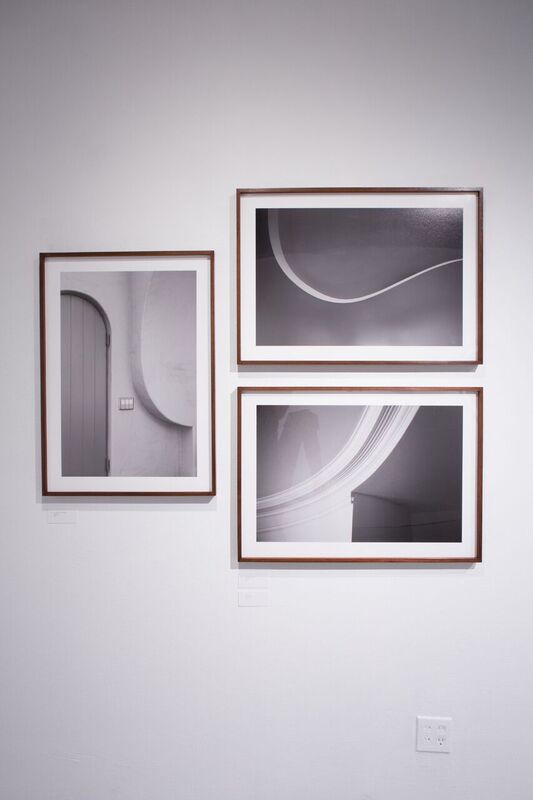
Williams’s multi-style approach cloaked a deep fascination—and facility—with the basic components of architectural form. That fascination takes different routes, depending on the project, client, and their desired treatment. In his more modern works, for example, Williams backlit spare, open staircases with vertical runs of glass, filling the areas below the treads with tropical plants and rock gardens. Under more Spanish-inspired stylings, staircases zigzag back and forth solidly, concealing spaces below tile-topped treads. In another instance, a colonial staircase takes on more elegant motions: The doubly-curved underbelly of a stair’s stringer swooping up, revealing a thin and pliable surface decorated with a curved skirtboard, projecting treads and thin balusters.
In these images, Ireland conveys a sense of mindful specificity that, when coupled with the various stylistic treatments, makes one yearn for the days before architectural components all came off-the-shelf. Instead, Ireland makes clear the labor of the architect, the hand-built nature of buildings, and the cornucopia of skills necessary to bring drawings and details to life in wood, stone, and plasterwork—aspects that are not only lost in contemporary building, but sorely missing as well.
Another grouping—a set of three images—focuses on the skill with which Williams deployed curved geometries, embedding sinuousness deeply and subtly within his work from an era typically associated with straight lines and flat planes. With an undercut swoop of stucco gliding past an eclectic revival doorway, views of colonial-styled trim meeting at unresolved edges, and the freeform, french curve-derived arcs of a midcentury ceiling, Ireland highlights a dexterity with trim, plaster, and ruled surfaces that perhaps also has been lost to time. The swooping eaves and projecting window hoods in other photos describe some of Williams’s best eclectic works, concealing—and creating—unique material collisions that arise inside each building, qualities that are enriched through built-up layers of fondant and trim.
“[Williams] labored to find out exactly what his clients wanted and then labored to give it to them. It was more important to him to design for the clients’ desires and needs than it was for him to push a singular, distinctive vision,” Ireland said.

The architect’s stylistic dexterity is well-known—his work ran the gamut in terms of style, embodying Hollywood Regency, midcentury modern, as well as Spanish-, Tudor-, and Second Empire- Revival styles—a quality that comes through in the nearly taxonomic photographs Ireland has created to compare their respective components. Though the vast majority of Williams’s works are residential in nature—glitzy chateaus, solemn haciendas, and sprawling ranches that work to convey the clients’ proclivities through curb appeal—the show also highlights his commercial and civic projects, including designs for the stately Golden State Mutual Life Insurance building.

The exhibition succeeds where very few have tried and perhaps none have succeeded, painting an intimate, personal, and meticulous portrait of one of the postwar era’s most prolific and virtuosic architects. Ireland said this outcome was self-fulfilling: “If his work seems personal, I think it’s because it was. It was of personal importance to him that his work be impeccable, and he was also very consciously designing for the personalities of the people who would be using his buildings.”
The maturation of Williams’s prodigious built legacy has generated renewed interest in his work, but much of this interest is too broad in nature. The sheer scope and breadth of Williams’s oeuvre has eluded considered academic examination. “[In] many ways [Williams] has been written out of L.A.’s architectural canon. We’re trying to bust through the dam of people not doing shows on his work,” said architect Barbara Bestor, JSI’s director and a major force behind the exhibition.
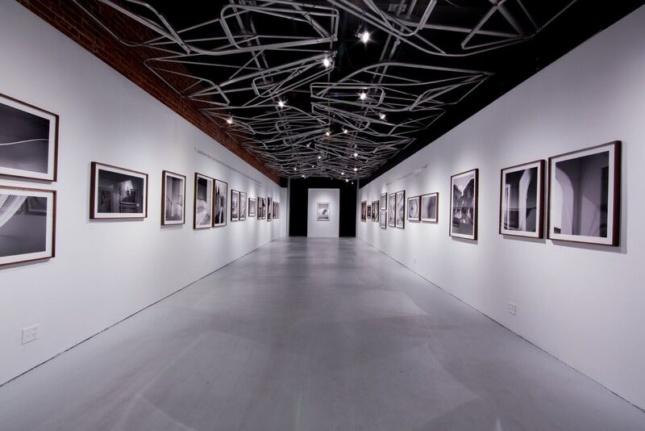
“There’s not enough source documentation of Williams’s work,” she added, alluding to the fact that much of the Williams archive was destroyed by fire following the 1992 L.A. Riots, before the works could be digitized. “In the digital era, if you’re not published online, you cease to exist as a research topic,” Bestor said. “My job as an architect and student of 20th century design is to figure out why so many of my heroes don’t have Wikipedia pages.”
Regarding the exhibition, Ingalill Wahlroos-Ritter, dean of Woodbury School of Architecture, said, “WUHO is committed to hosting exhibitions that celebrate diversity and reposition important voices often overlooked by mainstream media. Notable past exhibitions have included the 2013 show, Deborah Sussman Loves L.A., a long overdue celebration of this pioneering environmental and graphic designer, and the exhibition of the photographs of Pedro E. Guerrero by the [JSI].”
Williams’s work, along with much of the press and academic research associated with it, was collected in a 2010 exhibition organized by the Paul R. Williams Project, an initiative of AIA Memphis and the Art Museum of the University of Memphis. The exhibition was created to highlight the architect’s career and to begin the process of formally documenting his work while re-elevating Williams to the perch atop the discipline he had occupied before his death in 1980. Leslie Luebbers, project director for the Paul R. Williams Project, explained via email that work was currently underway to bring the exhibition to other parts of the country in a few years. For now, the group is touting a bibliography of Williams’s writings and mentions in the press in an effort to spur new academic research on the architect.
As those efforts take flight, Ireland’s photographs will perhaps provide impetus for new insights into Williams’ storied career. “Looking at details (and shooting in black and white) allowed me to focus on form and design,” Ireland explained. “I interpret his work as being meticulous yet really warm and human, and those are the qualities I wanted to convey.”
The exhibition is on view through February 11, 2018. See the WUHO Gallery website for more information.








